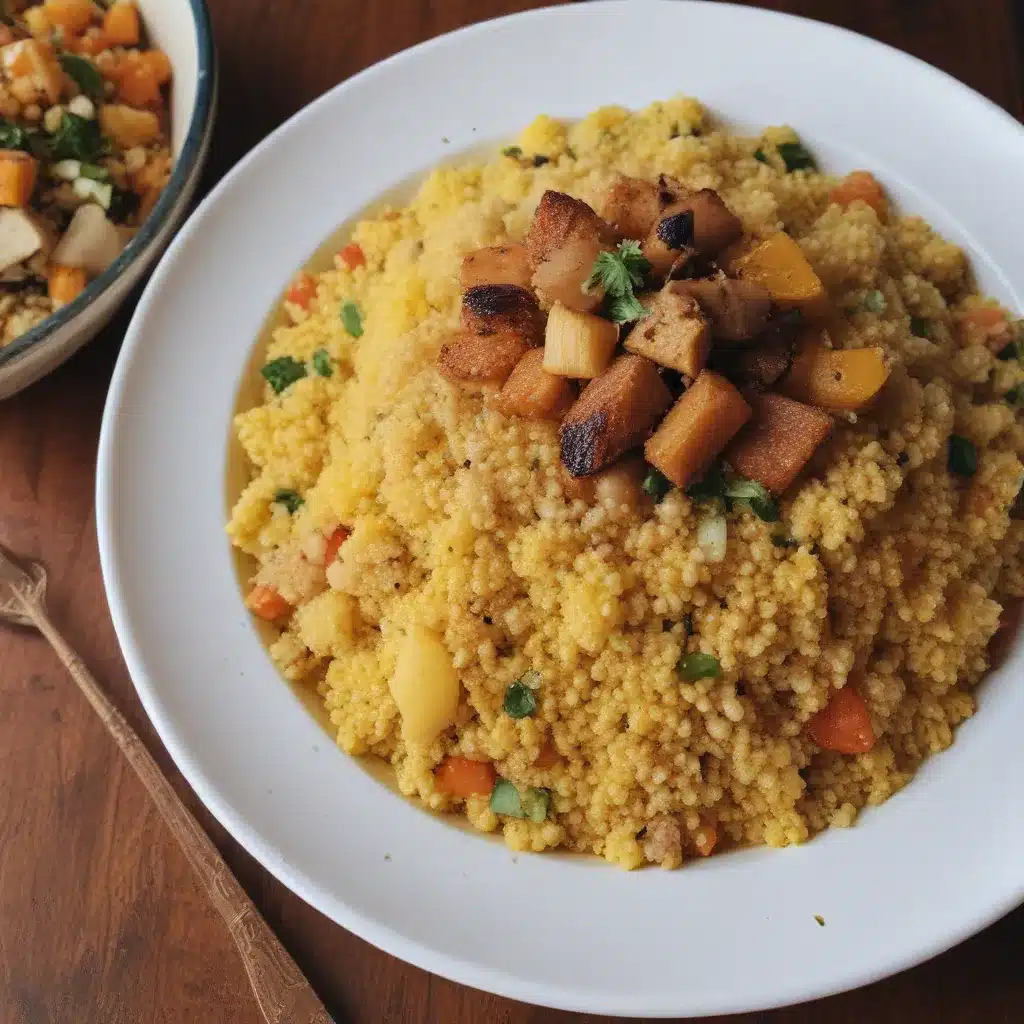
Couscous: The Unsung Hero of Moroccan Cuisine
If you were to ask me a year ago whether I’d ever consider making couscous at home, I would have laughed and said, “Are you kidding? That’s way too much work.” Boy, was I wrong. Little did I know that this humble grain, which I had long relegated to the sidekick role in Moroccan cuisine, was about to steal the spotlight at my favorite local eatery, El Bahia.
Uncovering the Secrets of Couscous
It all started when I stumbled upon an article that challenged my preconceptions about couscous. Smitten Kitchen had a piece that delved into the origins and preparation of another Moroccan staple, falafel, and it got me thinking – if I could make that at home, why not couscous?
As I delved deeper, I discovered that couscous is not just a simple side dish, but a culinary art form in its own right. The traditional method of steaming the tiny grains over a fragrant broth is a labor of love, requiring patience and a keen eye for detail. But the results, I soon learned, are nothing short of transcendent.
Embracing the Couscous Challenge
Armed with this newfound knowledge, I decided to take on the couscous challenge. I began experimenting in my own kitchen, following the techniques I had read about and incorporating the flavors that had captivated me at El Bahia. The first few attempts were a bit hit-or-miss, but with each batch, I learned something new.
One of the key revelations was the importance of properly preparing the couscous grains. As one blogger noted, the traditional method of steaming the couscous over a broth is far superior to simply boiling it in water. The resulting texture is fluffier, more tender, and better able to absorb the flavors of the accompanying dishes.
Discovering the Versatility of Couscous
As I experimented further, I also began to appreciate the incredible versatility of couscous. It’s not just a vehicle for tagines and stews; it can be the star of the show. At El Bahia, I had tasted couscous dishes that were downright revelatory, from fluffy, herb-infused versions to ones that were studded with dried fruits and nuts.
I remember the first time I tried the couscous at El Bahia. It was a chilly autumn evening, and I had been craving something hearty and comforting. When the dish arrived, I was struck by the vibrant colors and the tantalizing aromas wafting from the plate. The couscous was light and fluffy, with a subtle sweetness that perfectly balanced the savory elements of the dish.
As I took my first bite, I was transported to the bustling souks of Marrakech, where the air is thick with the scent of spices and the sound of vendors haggling over their wares. The couscous was the foundation upon which the other flavors danced – the tender chunks of lamb, the fragrant herbs, the tart pomegranate seeds. It was a symphony of taste and texture, and I couldn’t believe I had been missing out on this culinary treasure for so long.
Mastering the Art of Couscous
In the months that followed, I became obsessed with perfecting my couscous-making skills. I experimented with different seasonings, tried my hand at incorporating various vegetables and proteins, and even ventured into the realm of couscous-based salads.
One of my favorite discoveries was the combination of couscous, roasted vegetables, and a tangy lemon-herb dressing. The way the couscous soaked up the bright, vibrant flavors was simply divine. I also found that a sprinkle of toasted almonds or a handful of plump raisins could transform a simple couscous dish into a true showstopper.
Elevating Couscous at El Bahia
It was during this couscous-centric phase of my culinary journey that I began to appreciate the magic happening at El Bahia. The restaurant’s chefs clearly had a deep understanding of the grain’s potential, and they were using it to create dishes that were both authentic and innovative.
One of the standout offerings on the menu is the Lamb Tagine with Couscous. The tender, slow-cooked lamb is nestled atop a bed of fragrant, saffron-infused couscous, with a medley of roasted vegetables and a sprinkle of fresh herbs. The flavors are bold and complex, yet remarkably well-balanced.
Another favorite of mine is the Vegetarian Couscous Salad. This light and refreshing dish features fluffy couscous tossed with roasted zucchini, bell peppers, and a tangy lemon vinaigrette. It’s the perfect antidote to a heavy tagine, and I love how the couscous acts as a canvas for the vibrant flavors.
But perhaps the most impressive feat of the El Bahia team is their ability to transform couscous into a true showstopper. The restaurant’s signature Couscous Royale is a sight to behold, with a towering pile of steamed couscous surrounded by an array of slow-cooked meats, vegetables, and flavorful broths. It’s a dish that demands attention, and one that reminds me of the true depth and complexity of this humble grain.
Couscous: A Culinary Journey
As I reflect on my couscous-fueled adventures, I can’t help but marvel at how my perception of this ingredient has evolved. What was once a simple side dish has now become a source of endless fascination and delight.
Through my experiments in the kitchen and my explorations at El Bahia, I’ve come to understand that couscous is so much more than just a vehicle for other flavors. It’s a canvas upon which talented chefs can paint their culinary masterpieces, a vehicle for showcasing the rich traditions and bold flavors of Moroccan cuisine.
And as I continue to delve deeper into the world of couscous, I can’t wait to see what other surprises and delights await. Whether it’s a fragrant tagine, a vibrant salad, or a show-stopping Couscous Royale, I know that this humble grain will continue to captivate and inspire me. After all, at El Bahia, couscous is anything but a simple side – it’s the star of the show.


